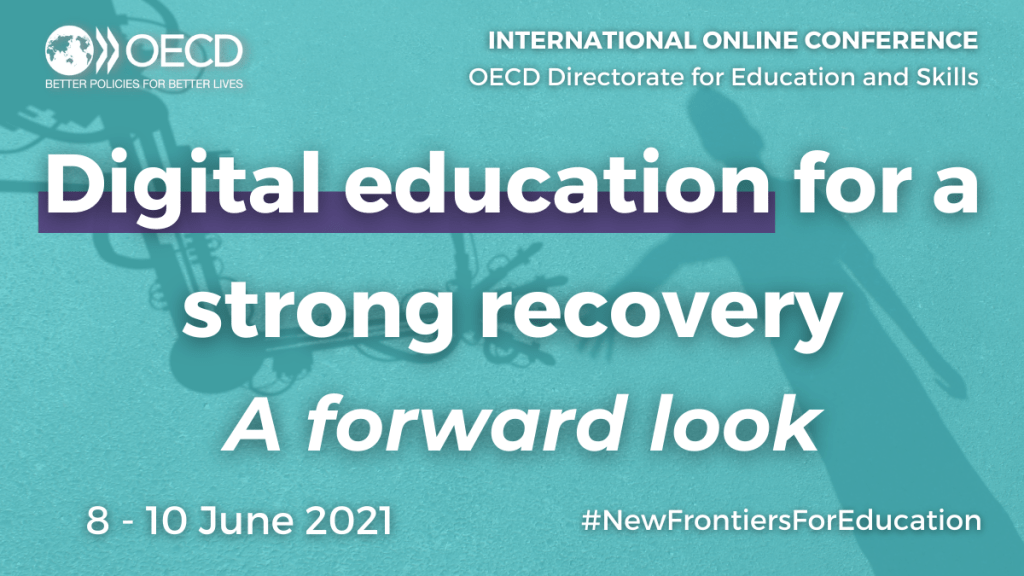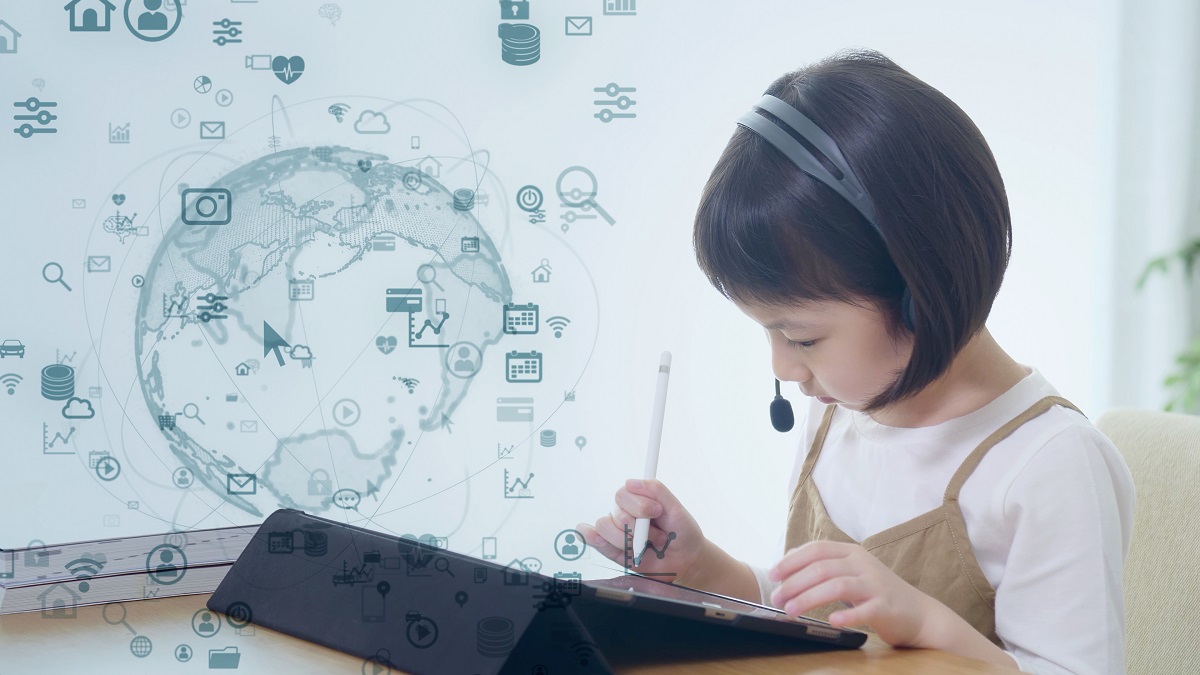By Andreas Schleicher
Director, OECD Directorate for Education and Skills
Key points:
– The OECD Digital Education Outlook 2021 looks at how AI, robots and blockchain are transforming education
– Remote classrooms seen during COVID are not the same as smart ones – schools must now dive into digital
– Policy makers must encourage developers to work with teachers and students to make EdTech relevant, scalable and easy to use
Few groups have been less vulnerable to the coronavirus than school children, but few groups have been more affected by the policy responses to contain this virus. The crisis has exposed the many inadequacies and inequities in our school systems – from the broadband and computers needed for online education, through the supportive environments needed to focus on learning, up to the failure to enable local initiative and align resources with needs. But as these inequities are amplified in this time of crisis, this moment also holds the possibility that we will not return to the status quo when things return to “normal”. It is the nature of our collective and systemic responses to the disruptions that will determine how we are affected by them.
From remote classrooms to smart ones
When countries closed down schools in early 2020 to deal with the COVID-19 pandemic, learning went digital. In the year since, teachers, students and administrators have done, what is effectively, a collective crash course on digital education. There have been many downsides to it, from screen fatigue and adaptation stress to the falling behind of those ill-equipped for digital learning or unprepared to learn on their own. But the experience has catapulted education systems, traditionally laggards when it comes to innovation, years ahead in what would have been a slow slouch towards smart schooling.
Remote classrooms, however, are not the same as smart ones. Rather, they have been a stop-gap measure that has kept learning going and conserved existing educational practice rather than transform it. As a result, remote classrooms have rarely been of the same calibre as physical ones, and, again, not for students without the wherewithal – technologically or mentally – to do online classes. Now is the time for schools to dive into digital.
Remote classrooms, however, are not the same as smart ones… Now is the time for schools to dive into digital.
What can technology do in smart classrooms?
Our Digital Education Outlook 2021 shows that education technology is getting ready too. While we study mathematics on a computer, the computer can now study how we study and then make our learning experience so much more granular, adaptive and interactive. Together with sensors and learning management systems, Artificial Intelligence (AI) can give teachers a real sense of how different students learn differently, where students get interested and where they get bored, where they advance and where they get stuck. Technology can help adapt learning to different student needs and give learners greater ownership over what they learn, how they learn, where they learn and when they learn.
AI can help teachers, especially novice ones, read the room better and slow down, speed up, or throw out a pop quiz question when there’s a lull. Learning analytics can tell a teacher working out the next day’s lesson plan who aced the homework assignment on carboxylic acid derivatives and who needs to review it still.
And of course, AI is helping assessment and exams make big leaps, whether these are assessments through simulations, hands-on assessments in vocational settings, or machine-learning algorithms scoring essays. One of the most consequential mistakes that education made as it industrialised learning over the past centuries was to divorce learning from assessment; that is, having students pile up lots of learning and then, sometimes years later, testing whether they could reproduce some narrow slices of that learning within a short window of time. Technology can now reintegrate learning and assessment, using real-time data and feedback to help students learn better, teachers teach better and education systems become more effective.
Turning the promises of education technology into a reality
But for smart education technology to really take off it has to be user-friendly. Data on what percentage of the quadratic equations unit Hanzhou has mastered or whether Emilia has gotten bored with post-war social welfare history is no good if the teacher has to stop a classroom lesson to consult the data. Data needs to be intuitive. Education ministries can encourage developers to co-create with teachers and students digital tools that are relevant, affordable, interoperable and easy to use. Technology is unlikely to work for learning unless the teaching profession is part of the design of those tools.
The point is that more technology here does not automatically translate into better learning outcomes. In fact, results from OECD’s latest PISA assessment show a persistent negative relationship between the intensity of technology use in classrooms and the digital reading, mathematics and science skills of 15-year-olds. Students who spent more time posting work on their school’s website, playing simulations at school, using learning apps and websites or doing homework on a school computer tended to perform more poorly on the assessment. Of course, there are many reasons that can explain this. What is clear is that for robots, classware, predictive analytics and the like to work effectively the role of teachers will have to be reinvented.
Technology is unlikely to work for learning unless the teaching profession is part of the design of digital education tools.
Technology and AI are not magic powers, they are just extraordinary amplifiers and accelerators that add speed and accuracy. AI will amplify good educational ideas and good practice in the same way it amplifies bad ideas and bad practice. AI can help remove bias and discrimination from educational practice in the same way it can spread and scale bias in educational practice. It can empower teachers to identify children at risk or disempower them from exercising human judgment. While technology is ethically neutral, it will always be in the hands of educators who are not neutral. The real risks do not come from AI but from the consequences of its application. When early warning systems flag a student in trouble, it should be a person who evaluates why and helps get them back on track.
Humans have always been far better at inventing new tools than using them wisely. It is only by investing in teachers that technology can liberate them from routine administrative and instructional tasks, and provide them with the opportunity and support to become great coaches, mentors, role models, inspirers and leaders. Education will always work best when humans are kept in the loop, not left to their devices, whether their own or not.

Join us on line for our international conference!
Register now to attend
Read more:
- OECD Digital Education Outlook 2021
- International Conference: Digital Education for a Strong Recovery
- OECD Centre for Educational Research and Innovation
- OECD Smart data and digital technology in education project
- Blog: Artificial intelligence and what it means for education tomorrow
- Lessons for education during the coronavirus crisis
- The OECD coronavirus (COVID-19) policy hub
Photo: Shutterstock/Metamorworks


